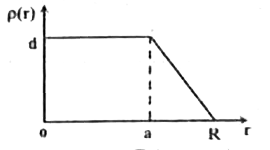In diatoms the nucleus generally lies in
Epivalve
Hypovalve
Central vacuole
Peripheral cytoplasm.
The correct Answer is:C
Step-by-Step Solution:
1. Understanding Diatoms: Diatoms are unicellular eukaryotic organisms that belong to the kingdom Protista. They are characterized by their unique silica cell walls and are a type of algae.
2. Structure of Diatoms: Diatoms have a distinct structure, which includes two parts: the epitheca (the upper part) and the hypotheca (the lower part). These two parts fit together like a lid.
3. Location of the Nucleus: The nucleus of diatoms is membrane-bound and is generally located within the cell. It does not lie on the cell walls (epitheca or hypotheca).
4. Central Vacuole: The nucleus is typically found in the central vacuole of the diatom. The central vacuole is a large, fluid-filled organelle that occupies a significant portion of the cell's interior.
5. Nucleus Movement: The nucleus may migrate towards the peripheral cytoplasm during cell division, but under normal circumstances, it resides within the central vacuole.
6. Conclusion: Therefore, the correct answer to the question "In diatoms, the nucleus generally lies in" is the central vacuole.
---
Topper's Solved these Questions
- KINGDOM PROTISTA (UNICELLULAR EUKARYOTES)BOOK - DINESH PUBLICATION ENGLISHCHAPTER - KINGDOM PROTISTA (UNICELLULAR EUKARYOTES)EXERCISE - REVISION QUESTION FROM COMPETITIVE EXAMS.
298 Videos
- KINGDOM PROTISTA (UNICELLULAR EUKARYOTES)BOOK - DINESH PUBLICATION ENGLISHCHAPTER - KINGDOM PROTISTA (UNICELLULAR EUKARYOTES)EXERCISE - CHECK YOUR GRASP
19 Videos
- KINGDOM PLANTAE OR METAPHYTA BOOK - DINESH PUBLICATION ENGLISHCHAPTER - KINGDOM PLANTAE OR METAPHYTA EXERCISE - CYG
20 Videos
- LEAFBOOK - DINESH PUBLICATION ENGLISHCHAPTER - LEAFEXERCISE - CYG
10 Videos
Similar Questions
Knowledge Check
Diatoms have
Aone flagellaBtwo flagellaCcells walls in parisDblue-green pigmentAssertion: Endosperm of angiosperms is generally triploid (3n).
Reason: It develops from primary endosperm nucleus formed by the fusion of haploid male gamete and diploid secondary nucleus.AIf both Assertion and Reason are true and the Reason is the correct explanation of the Assertion.BIf both Assertion and Reason are true and the Reason is not the correct explanation of the Assertion.CIf Assertion is true but the Reason is false.DIf both Assertion and Reason are false.

The electric field within the nucleus is generally observed to be linearly dependent on r. This implies.
View SolutionThe Bohr moden does not apply when more than one electron orbit the nucleues because it does not account for the electrostatic force that the electron exert on one another.For instance , an electrically neutral lithium atom (Li) contains three electrons in orbit around a nucleus that includes three protons (Z=3), and Bohr's model can be used for the doubly charged positive ion of lithium (Li2^(+)) that results when two electrons are removed from the neutral atom, leaving only one electron to orbit the nucleus . Obtain the ionization energy that is needed to remove the remaining electron from (Li2^(+))
View SolutionOutside a nucleus.
View SolutionNeutron scattering experiments have shown that the radius of the nucleus of an atom is directly proporitonal to the cube root of the number of nucleons in the nucleus. From _(3)7Li to _(76)189Os the radius is:
View SolutionA diatomic molecules has
View SolutionThe second ionization potential of Be is 17.98eV if the electron in Be is assumed to move in a spherical orbit with a central field of effective nuclear charge (Zeff) consisting of the nucleus and other electron by haw many units of charge in the nucleus shielded by other electrons? (the energy of electrons in first Bohr of H is −13.6eV) If the extent of shielding by the if electron of Li atom is the same as you have calculated above , find the ionization potential of Li
View Solution
